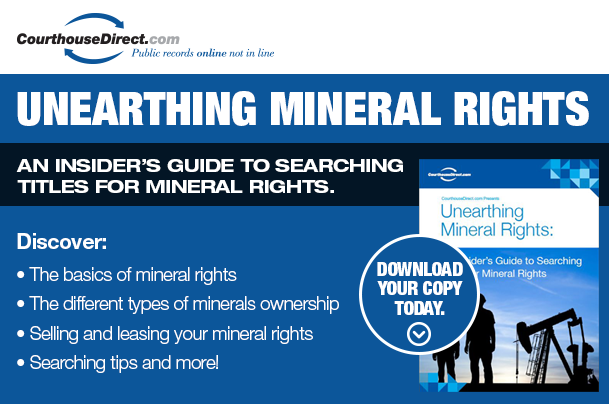 Recent breakthroughs in horizontal drilling, fracking and other mineral extraction techniques have thrown the contrasts and conflicts between mineral rights and property rights into sharp relief. Relentless population growth in mineral-rich parts of the country has increased these issues' relevance for millions of Americans. Landowners everywhere have an obligation to understand their legal relationship with what's in the ground.
Recent breakthroughs in horizontal drilling, fracking and other mineral extraction techniques have thrown the contrasts and conflicts between mineral rights and property rights into sharp relief. Relentless population growth in mineral-rich parts of the country has increased these issues' relevance for millions of Americans. Landowners everywhere have an obligation to understand their legal relationship with what's in the ground.
The American Exception
For starters, it's worth noting that the United States is one of the few countries in which mineral rights actually matter. In most other jurisdictions, sovereign governments retain complete ownership of valuable sub-surface materials. Private or state-run exploration and extraction companies must ink long-term leases to exploit these reserves. Although property owners who live above exploited reserves may be compensated for their troubles, they're not entitled to receive payment for the actual minerals or energy stores beneath their landholdings.
A Basic Overview of Mineral Rights in the U.S.
So just what do mineral rights mean for the owner? Quite simply, mineral rights provide their holders with the right to explore, develop, extract and market various resources under the surface of the applicable parcel of land. Such resources may include:
-
Coal
-
Precious metals like gold and silver
-
Non-precious or semi-precious metals like copper and iron
-
Specialty or rare earth elements and minerals like uranium and scandium
Like regular property rights, mineral rights can be bought, sold and transferred in accordance with state and federal law. Before the advent of modern drilling and extraction techniques, mineral rights were bound up in the "fee simple" deeds by which private property owners and governments transferred or disposed of parcels of land. Fee simple deeds are comprised of mineral rights and surface rights.
Surface Rights
Surface rights confer the legal right to improve, sell, transfer or otherwise manipulate the surface of a given parcel of land. Owners of the surface rights to agricultural land are free to plow or graze it as they see fit. They may also take steps to improve their land to aid these legal uses. Such improvements might even require surface rights owners to dig foundations for buildings or install underground tanks. However, surface rights owners who don't own the corresponding mineral rights to their "surface parcels" can't exploit the valuable resources that they may find beneath their land.
It's also important to note that mineral rights parcels are not necessarily coterminous with surface rights parcels. In some cases, a corporation or trust may own the mineral rights to the land beneath a large number of surface parcels.
How Proof of Ownership is Established
Transferring Mineral Rights
The transfer of mineral rights is perfectly legal and increasingly common. Mining or extraction companies or investor consortia may entice "fee simple" landowners to sell or lease their mineral rights. In exchange, they may provide compensation in the form of a generous cash payment, ongoing royalties, or some combination of the two. In other cases, speculators may pay existing mineral rights owners for the option of buying or developing their property at a later date. Regardless of the circumstances surrounding the transfer of mineral rights, property owners retain their surface rights and may continue to improve the land as they so desire.
Disagreements Between Property and Mineral Rights Owners
However, the transfer of mineral rights to an entity that intends to exploit the property's sub-surface resources may create some nasty disputes between the two parties. Despite their retained surface rights claims, property owners who sell their mineral rights are often forced to cede a portion of their landholdings to the exploiting party. Unless the miner or driller is able to access the land via a horizontal rig that originates on another piece of property, it will need to set up an extraction zone on the landholder's property. Such zones typically require the following improvements:
-
Drilling rigs
-
Outdoor storage areas
-
Containment ponds
-
Water treatment facilities
-
Roads or tracks
-
Fences
Obviously, all of this activity is liable to create noise, light, air and water pollution, and other environmental and safety hazards.
Final Thoughts: Hire a Lawyer
These complications may necessitate the intervention of a lawyer. In fact, it's optimal for landowners to retain a legal professional who specializes in land issues before signing away the mineral rights to their properties. This increases the chances that the landowner in question will receive fair compensation for their sub-surface resources and guarantees the establishment of a set of working expectations between the two parties to the deal.
* Image courtesy of FreeDigitalPhotos.net





















